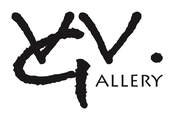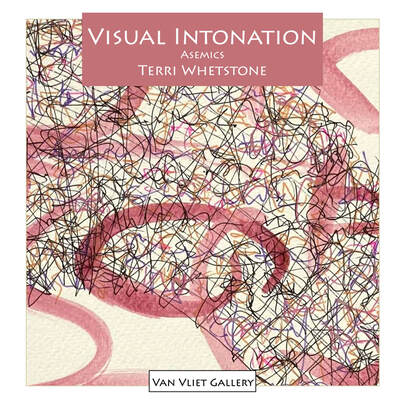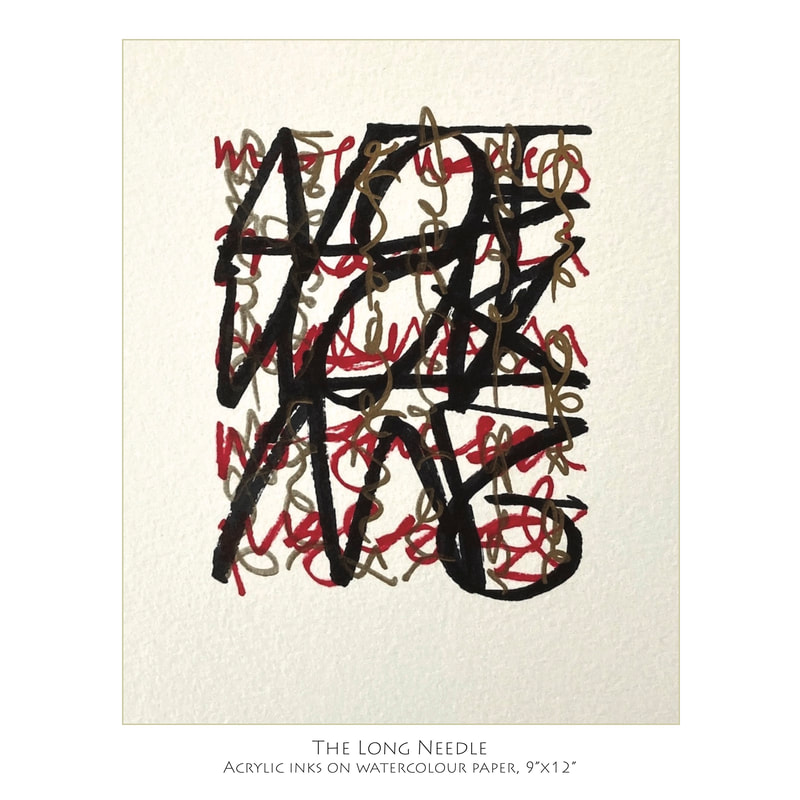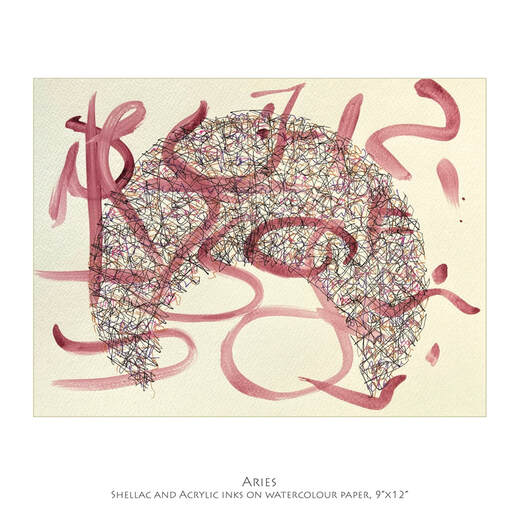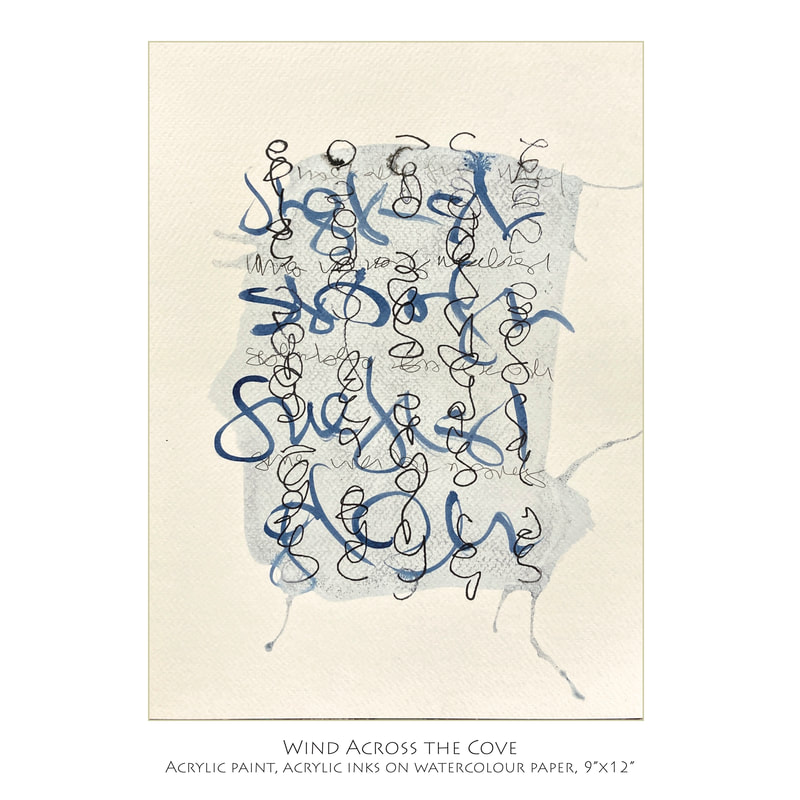Terri Whetstone
Visual Intonation
Asemics
|
Bio:
Born: Edmonton, Alberta (Canada); lived in Vancouver and Toronto. Now lives in rural Nova Scotia. Terri Whetstone is a multi-disciplinary artist working with large- scale painting, contemporary textile, and collage. She received a Bachelor of Fine Arts (Visual Arts) degree at the University of Alberta, Edmonton, where she studied with well-known Canadian Abstract painters. During her studies she focused on Formalist ideas reflecting her education in Modernism. Independently, she studied Feminist theory and art practises, which informed much of her artwork post-graduation. |
For the last year and a half, she has engaged with researching Asemic writing and has been using this technique as a way to circle back to abstraction, creating a dynamic series of drawings and paintings.
Whetstone’s Asemic project was exhibited in 2023 in her solo exhibition “Asked & Answered” at the Chester Art Centre (Chester, Canada) and a group exhibition, “Script”, at the Ice House Gallery (Tatamagouche, Canada). Artworks from the project was also featured in the inaugural publication of Sparkling Tongue Press, “Mistranslations” (UK) in December 2022.
An established artist with an active studio and exhibition career, Whetstone’s work is held in collections across Canada and in the USA.
Whetstone’s Asemic project was exhibited in 2023 in her solo exhibition “Asked & Answered” at the Chester Art Centre (Chester, Canada) and a group exhibition, “Script”, at the Ice House Gallery (Tatamagouche, Canada). Artworks from the project was also featured in the inaugural publication of Sparkling Tongue Press, “Mistranslations” (UK) in December 2022.
An established artist with an active studio and exhibition career, Whetstone’s work is held in collections across Canada and in the USA.
Artist Statement:As an visual artist I am committed to deep observation and a wide ranging sensitivity to the natural world and to human culture (especially art history, music, myth and literature). The artwork in this exhibition is part of my response to a world that has become noisier, more opinionated, and more alienating, and with my concern for how we make and trust meaning.
The artworks are expressive. They are generative rather than observational.
My intention is to engage the viewer’s imagination through the ambiguity of the text and for the artworks to be understood/ appreciated through subjective experience (looking and feeling) rather than through decoding or comprehension via reading and literacy. It is a body of work that is a pivot from “quick reads” to “no-reads” and challenges the audience to imagine meaning rather than “being told what to think”.
I describe my asemic artworks as “text-reminiscent”. That is, despite looking like readable words, the text is faux language. They are visual webs of quasi-calligraphic shapes, layered and balanced in relation to one another and, graphically, to the negative space of the paper or canvas ground.
As an aesthetic method, Asemic writing performs the gesture of handwriting while the content (or “message”) is freed (through its unreadability) from dogmatic cultural, commercial slogans, overt political messages or kitsch pop-spirituality content.
“Asemic writing is alchemy. It is this tool of transmutation that opens me up to expressing everything I’ve ever wanted to write but don’t wish to have read. It lets me be both writer and visual artist creating phenomenological spaces and perceptual constructs where meaning is achieved only through the recursive experience of viewing the artworks.” (Interview with Mistranslations magazine, December 2022).
My Asemic project has resulted in a large body of paintings and drawings. It seems I had a lot to “say”. I now find myself thinking a lot about silence. I foresee a project in the near-future exploring and creating non-representational paintings and drawings of silence.
~ Terri Whetstone, May 2023, Nova Scotia, CANADA
terriwhetstone.com @terriwhetstone
The artworks are expressive. They are generative rather than observational.
My intention is to engage the viewer’s imagination through the ambiguity of the text and for the artworks to be understood/ appreciated through subjective experience (looking and feeling) rather than through decoding or comprehension via reading and literacy. It is a body of work that is a pivot from “quick reads” to “no-reads” and challenges the audience to imagine meaning rather than “being told what to think”.
I describe my asemic artworks as “text-reminiscent”. That is, despite looking like readable words, the text is faux language. They are visual webs of quasi-calligraphic shapes, layered and balanced in relation to one another and, graphically, to the negative space of the paper or canvas ground.
As an aesthetic method, Asemic writing performs the gesture of handwriting while the content (or “message”) is freed (through its unreadability) from dogmatic cultural, commercial slogans, overt political messages or kitsch pop-spirituality content.
“Asemic writing is alchemy. It is this tool of transmutation that opens me up to expressing everything I’ve ever wanted to write but don’t wish to have read. It lets me be both writer and visual artist creating phenomenological spaces and perceptual constructs where meaning is achieved only through the recursive experience of viewing the artworks.” (Interview with Mistranslations magazine, December 2022).
My Asemic project has resulted in a large body of paintings and drawings. It seems I had a lot to “say”. I now find myself thinking a lot about silence. I foresee a project in the near-future exploring and creating non-representational paintings and drawings of silence.
~ Terri Whetstone, May 2023, Nova Scotia, CANADA
terriwhetstone.com @terriwhetstone
